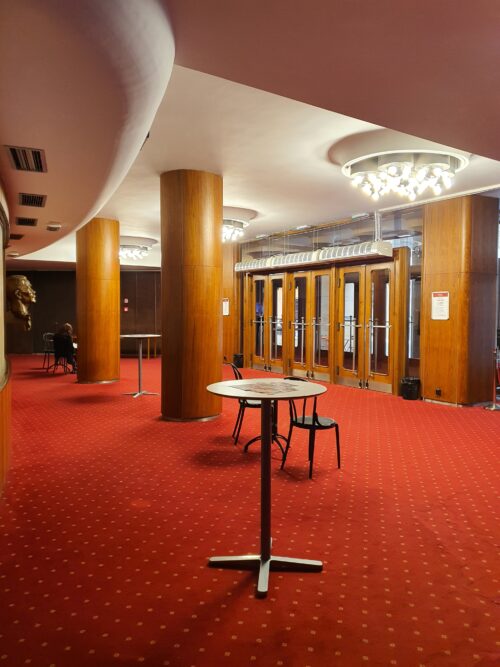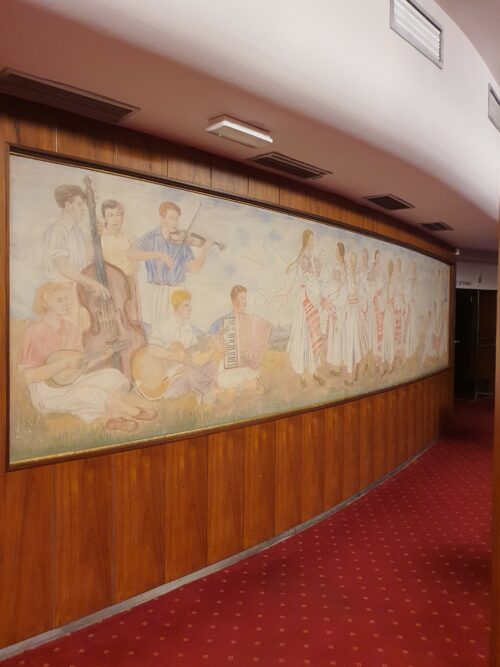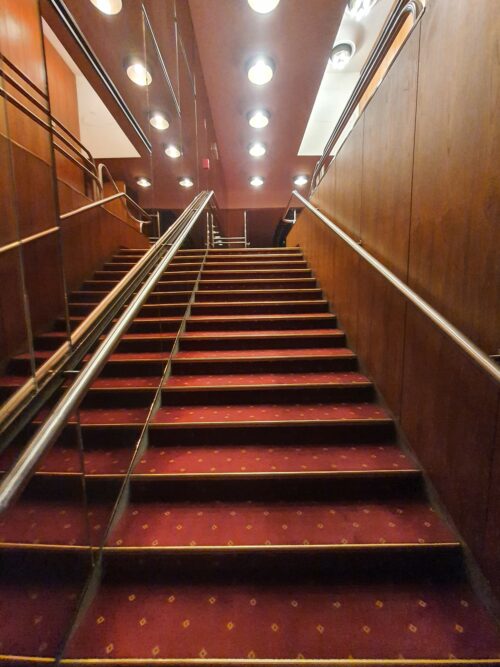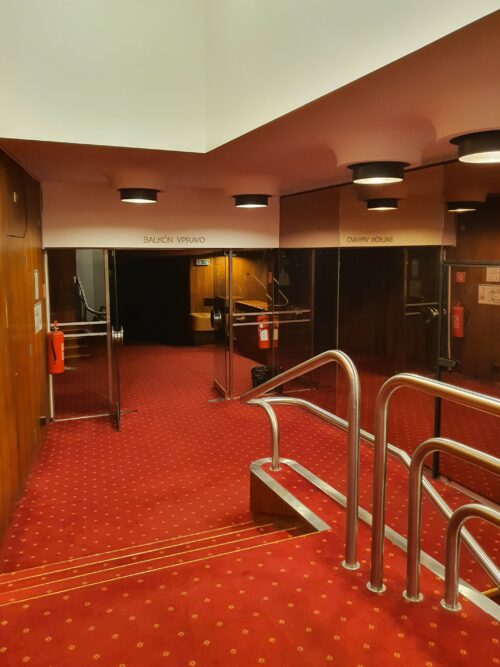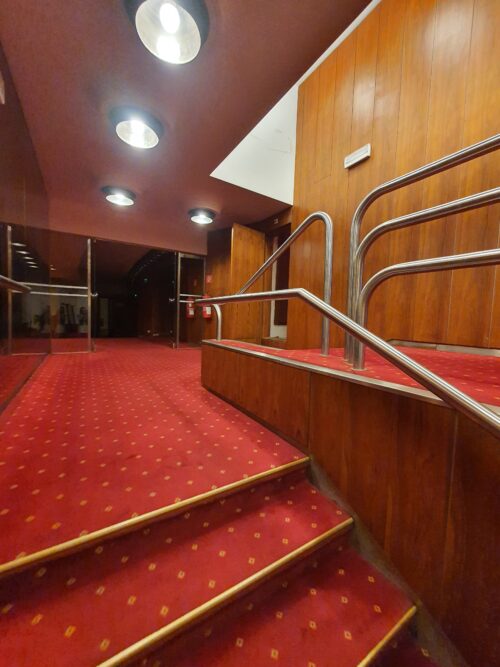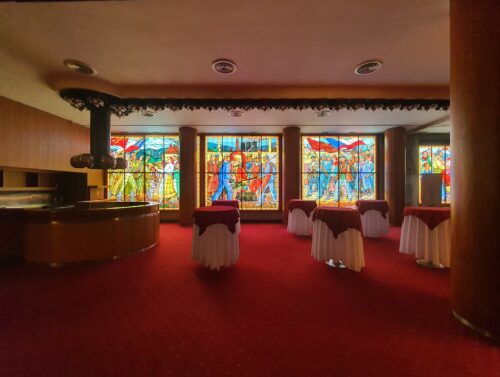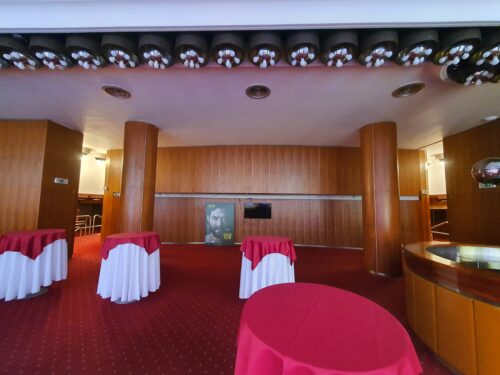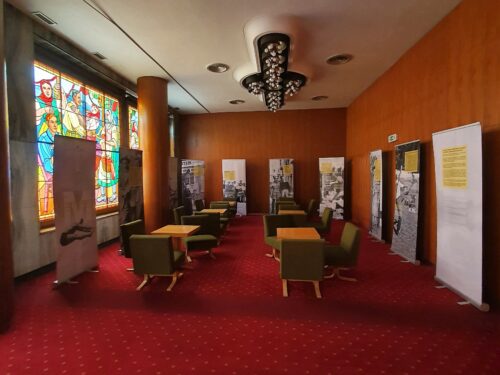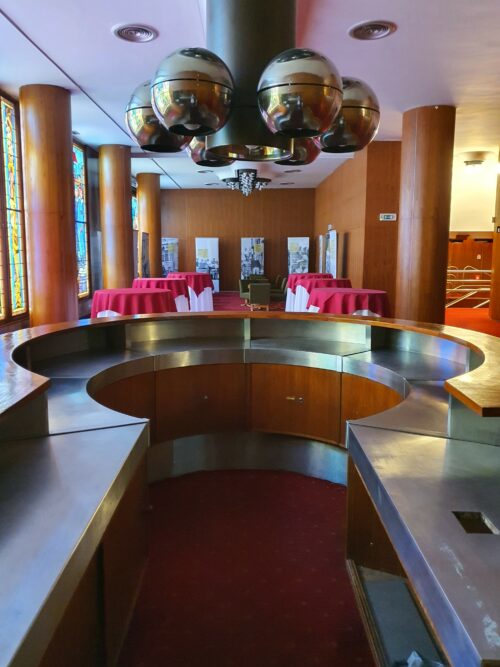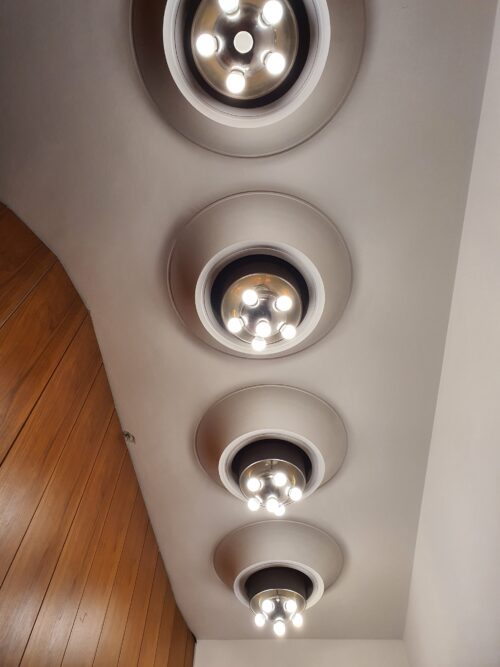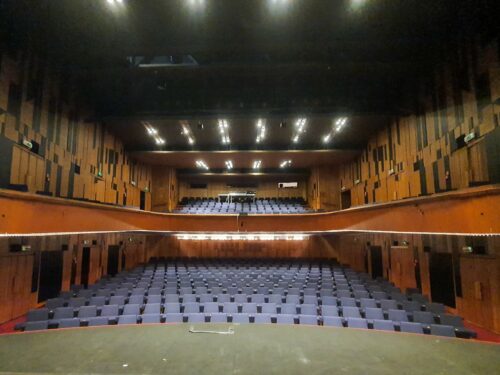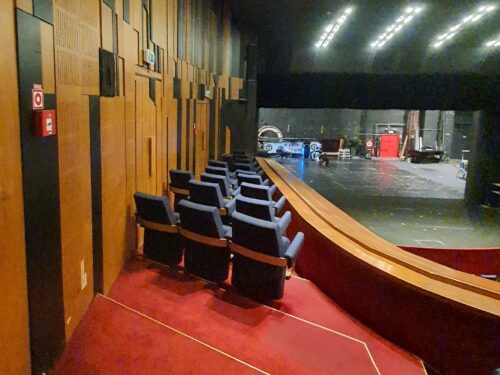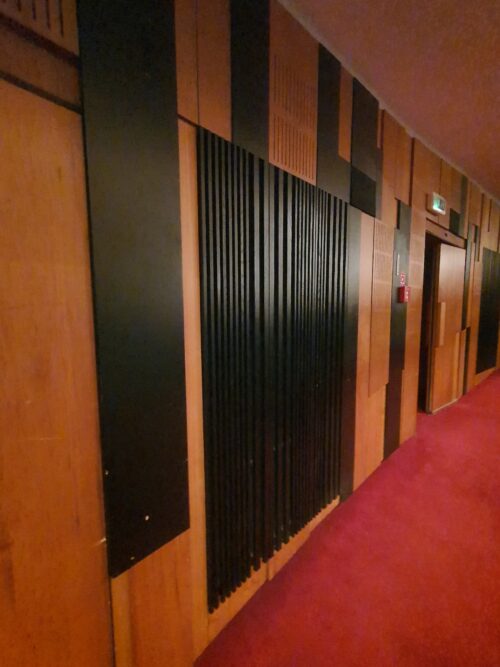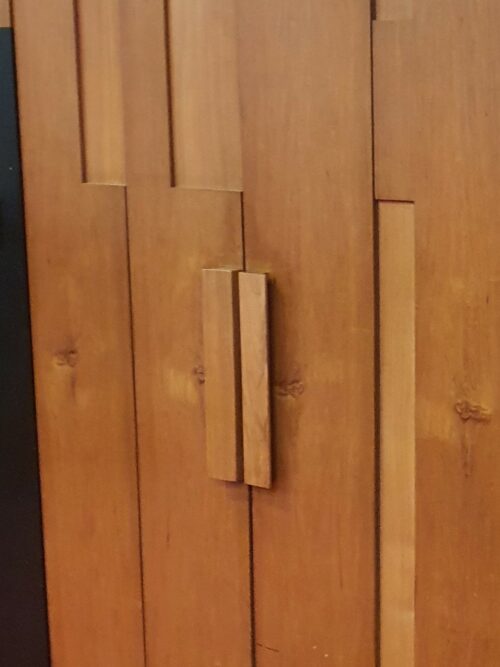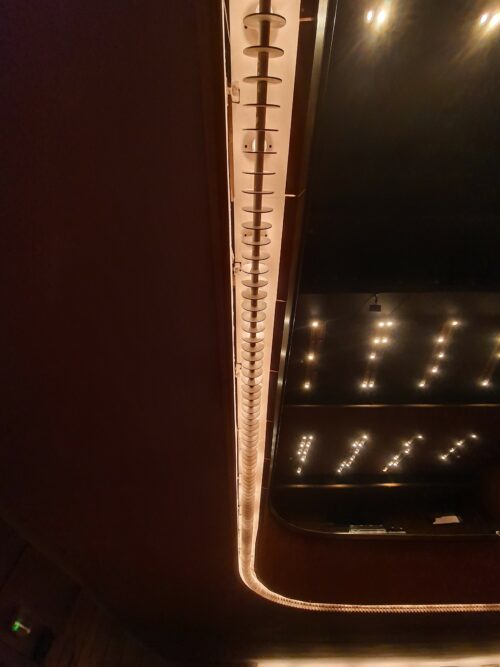Pavol Országh Hviezdoslav Theatre
Category: Cultural institutions
Architects: Eugen Kramár, Štefan Lukačovič
Architectural restoration: Ferdinand Zbuško
Interior restoration: Dušan Boháč, Ján Gallo, Boris Kančev, Štefan Lukačovič, Ivan Slameň, Ferdinand I. Zbuško
Works of art: Janko Alexy, Teodor Baník, Martin Benka, František Draškovič
Location: Laurinská 20, Bratislava
Design: 1942–1955
Built in years: 1942–1955
Restoration in years: 1981–1983

The Pavol Országh Hviezdoslav Theatre is situated in a gap site, in a heritage-protected area of the central part of the city. The interiors designed for the purposes of the first Slovak drama theatre scene were created as part of the then representative headquarters of the Slovak National Bank – the main initiator of the building’s creation. The initial impulse for the integration of the theatrical spaces into the bank’s premises was the persisting demand of the Slovak National Theatre (SND) to create a branch stage, as the spatial capacity of the old town theatre was not sufficient. Interestingly, the employee of the Burgtheatre in Vienna, Fritz Judtmann, who had led several adaptations of Viennese theatres in the post-war period, cooperated with the architects in creating the interiors. Although the drama scene was relocated in 2007 after the opening of the new Slovak National Theatre headquarters, the period interiors of the theatre still host significant events in culture and education. [1,3]
The necessary revitalisation of the technical state of the building brought several modifications, the most important of which include the theatre hall reconstruction in 1969 and the modernisation of interiors in early 1980s. The renovation accompanied by layout changes was quite complicated, especially due to the existing reinforced concrete construction system and inadequate technical and technological equipment. During the related interior revitalisation, floor surfaces were replaced, panelling was renovated, and suspended ceilings were modified. It was also accompanied by the modification of the entrance facade and the new fillings of the construction openings. The renovated interiors have survived to this day, thanks to which they continue to remind the visitors of the theatre atmosphere of more than forty years ago.
The entrance zone and the interiors of the foyers lining the theatre hall are dominated by the materiality of wood complemented by glass and textile surfaces. The interiors are warmed by red carpets, evoking the impression of a theatrical atmosphere. The accentuating metal parts incorporated in railings, door handles and other interior components form an artistic counterbalance to the natural wooden materials. The shaped gypsum/plaster ceilings – a specific feature of the interiors – are in an artistic and structural symbiosis with the light objects evoking folklore motifs. The seating furniture and the dressing rooms and bar furnishings are based on solid wood material in combination with upholstered leather parts.
The spatial concept of the theatre hall is a reference to the amphitheatrical type of theatre, which is manifested especially in the elongated arched lines of the auditorium seats and in the vertical elevation of the auditorium. As a part of the hall renovation in the 1980s, the parterre, wooden panelling, and balcony front were all completely renovated, along with seating and suspended ceiling being fully replaced. The new suspended ceiling created using composite wooden panels considered the specific requirements for the integration of modern technological air conditioning equipment, stage lighting, and acoustics. [2] The current state of the theatre hall requires another revitalisation, mainly in terms of renovation of the surfaces and technical equipment, as well as to fulfil various criteria corresponding to the standards of a modern European theatre.
An unmistakable part of the exterior and interior areas are the works of art that complete the building’s expression. The entrance facade decoration in the form of two (originally three) muses was authored by the sculptor František Draškovič and the stained-glass windows were created by Janko Alexy. The entrance hall is decorated with large-scale paintings of folklore figurative motifs, among which there stands a bronze bust of the Slovak poet, writer, novelist, translator, and lawyer Pavel Országh Hviezdoslav. The bust was sculpted by Teodor Baník, and the original decorations of the auditorium, foyers and of the curtain were created by František Gajdoš. The painting on the theatre’s iron curtain was created by the famous Slovak painter Martin Benka. [1, 4]
“The interior of the theatre, which has the same style across all floors, is interesting from many points of view. In addition to the aesthetic qualities, one can also feel the design quality and craftsmanship from the design, because the artistic details do not try to hide the structural joints, on the contrary, sometimes they even highlight them. There is semi darkness in the foyer even during the day, which allows the colourful stained-glass windows to stand out beautifully. The metal railings and especially the paintings evoke a desire to stop for a while and focus on the whole, as well as on the details.” [5]
- Dlhánová, Viera: Mestské divadlo Pavla Országha Hviezdoslava. [The Pavol Országh Hviezdoslav City Theatre] Website: European Theatre Architecture. Culture 2000. Available at: https://www.theatre-architecture.eu/sk/db/?theatreId=220
- Zbuško, Ferdinand I.: Oprava a modernizácia P. O. Hviezdoslava v Bratislave [The restoration and modernization of the P. O. Hviezdoslav in Bratislava] In: Projekt 7/289/85, pp. 14-16
- Rok 1955: V Bratislave otvorili Divadlo P. O. Hviezdoslava. [1955: The P. O. Hviezdoslav Theatre in Bratislava has been opened.] Website: Vtedy.sk. Available at: https://www.vtedy.sk/dpoh-divadlo-pavol-orszagh-hviezdoslav-otvorenie-1955
- Divadlo Pavla Országha Hviezdoslava. [The Pavol Országh Hviezdoslav Theatre.] Website: Theatre walks. Available at: https://divadelneprechadzky.theatre.sk/bratislava/oQJ2R06XyM/m4DXvGeEpK/
- Mikitková, Viktória: Divadlo Pavla Országha Hviezdoslava. [The Pavol Országh Hviezdoslav Theatre.] Seminar paper for the Public Interior course, Faculty of Architecture and Design STU Bratislava, Summer Term 2022–23
Viktória Mikitková

